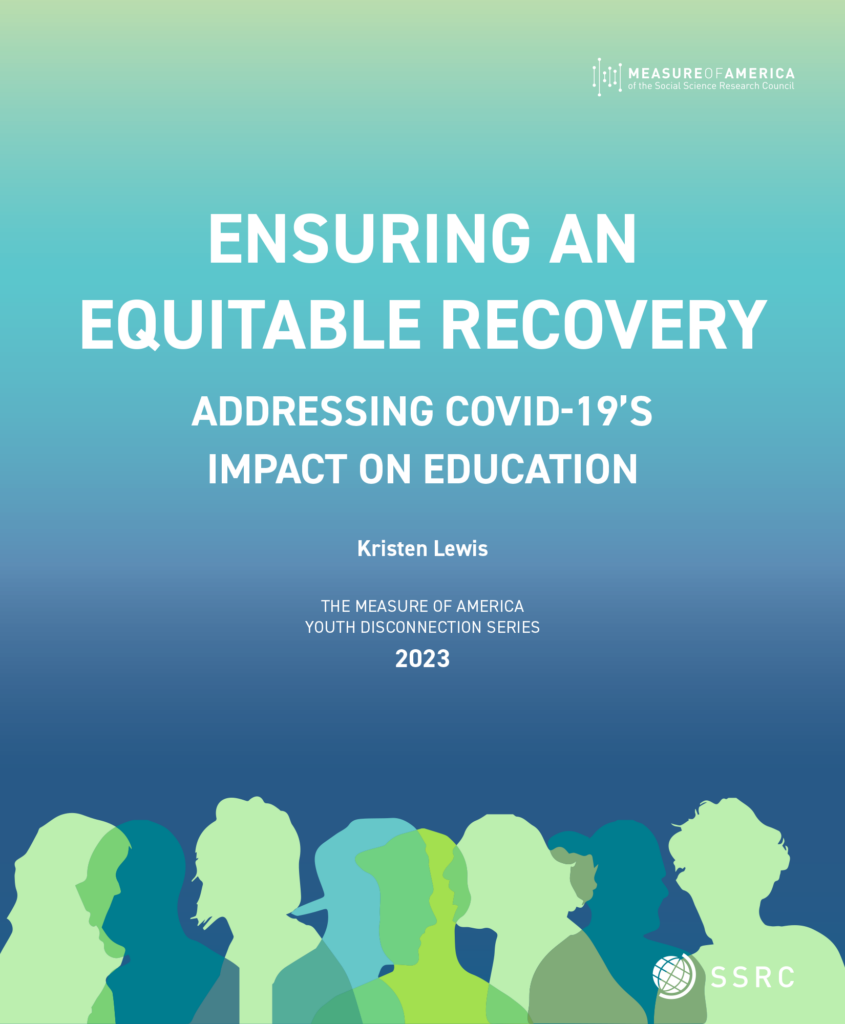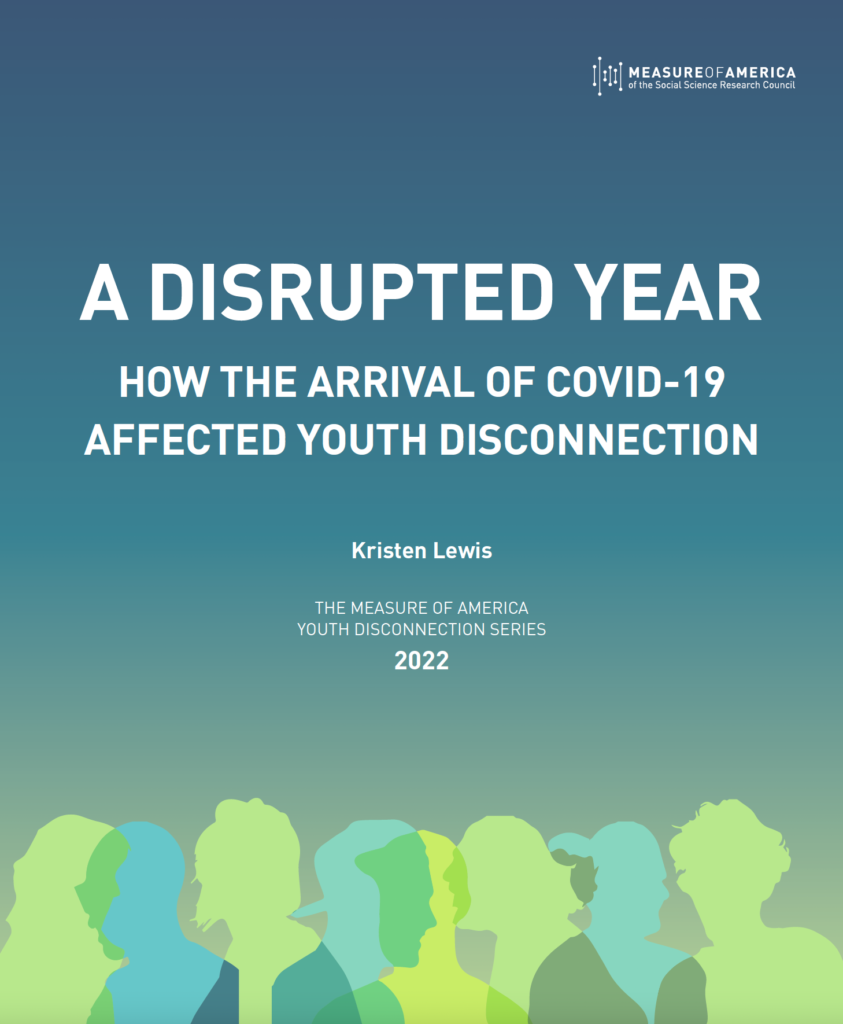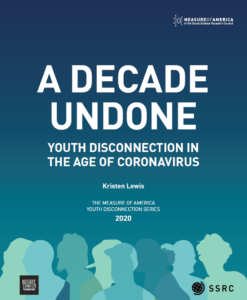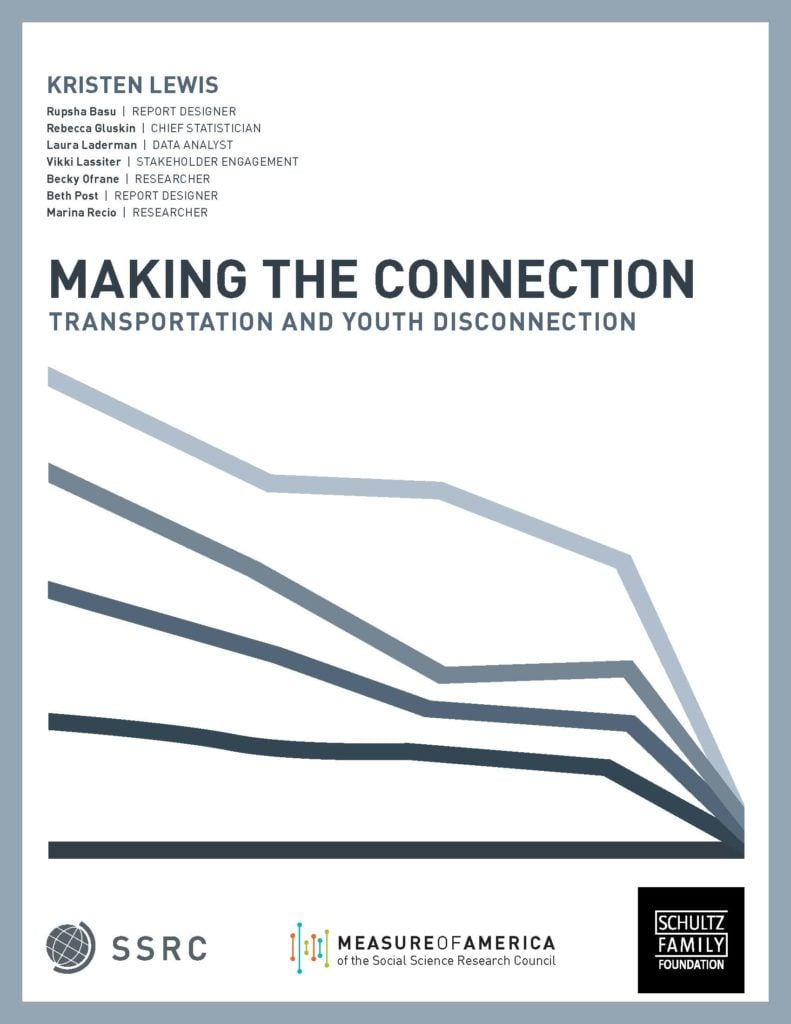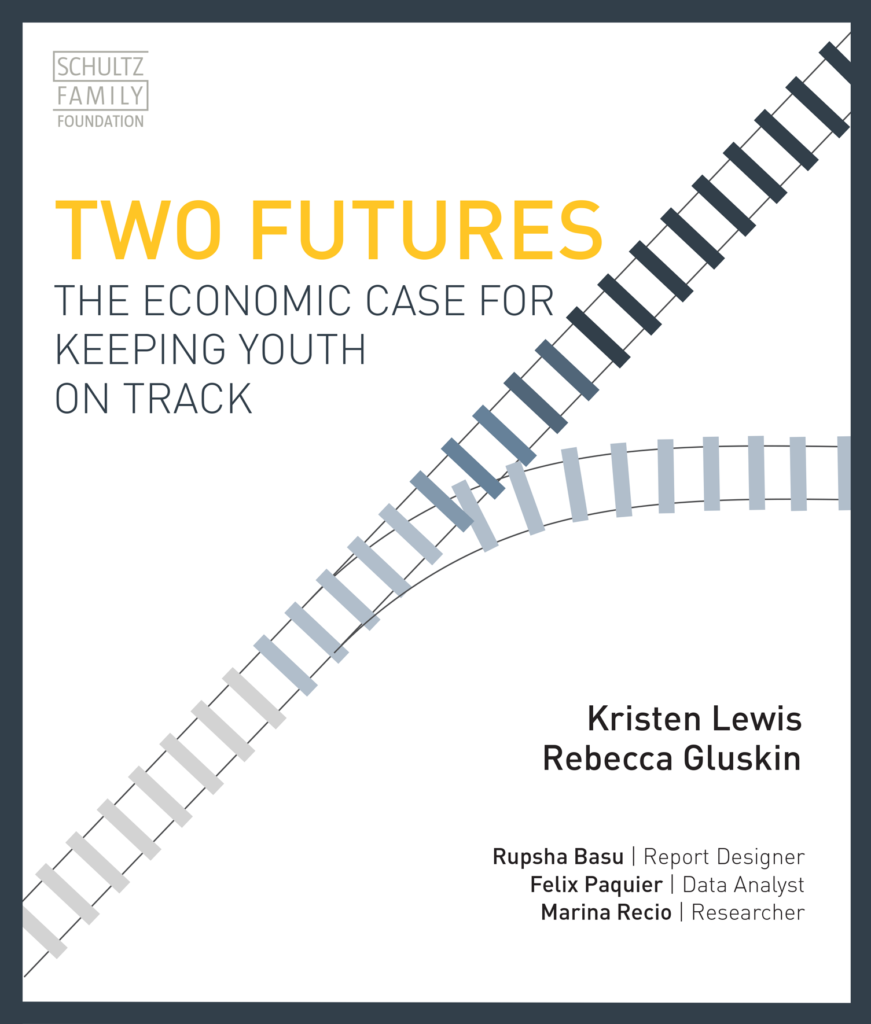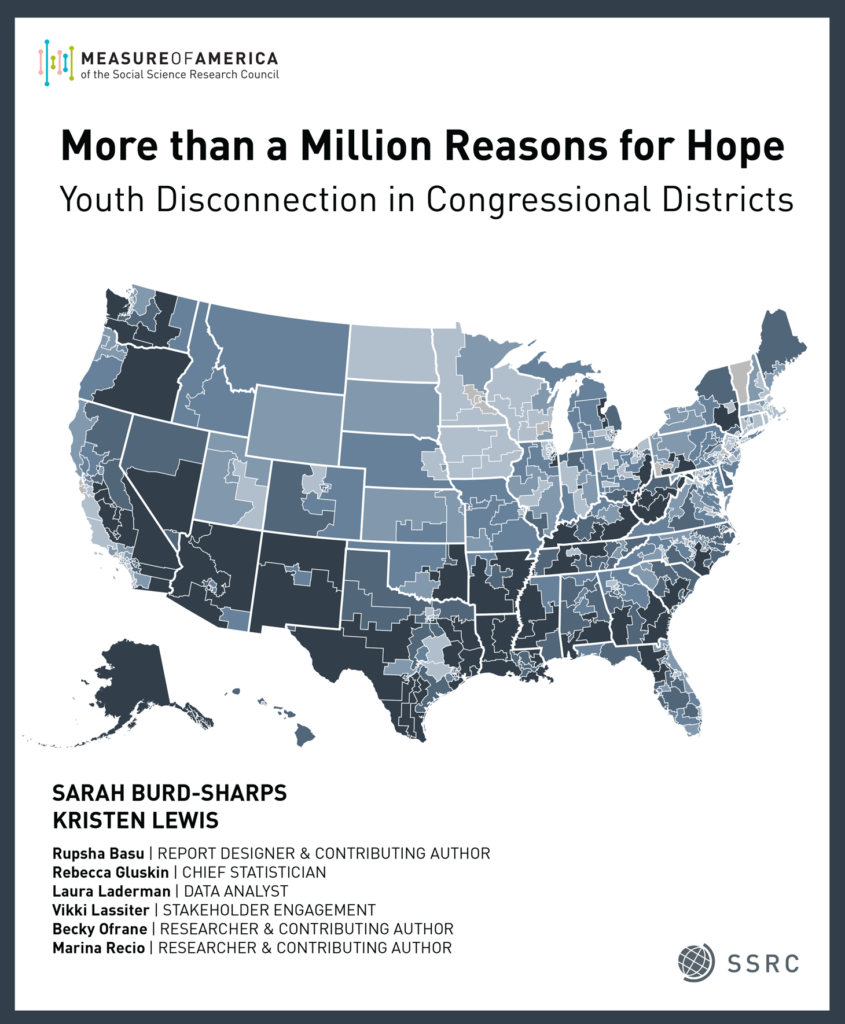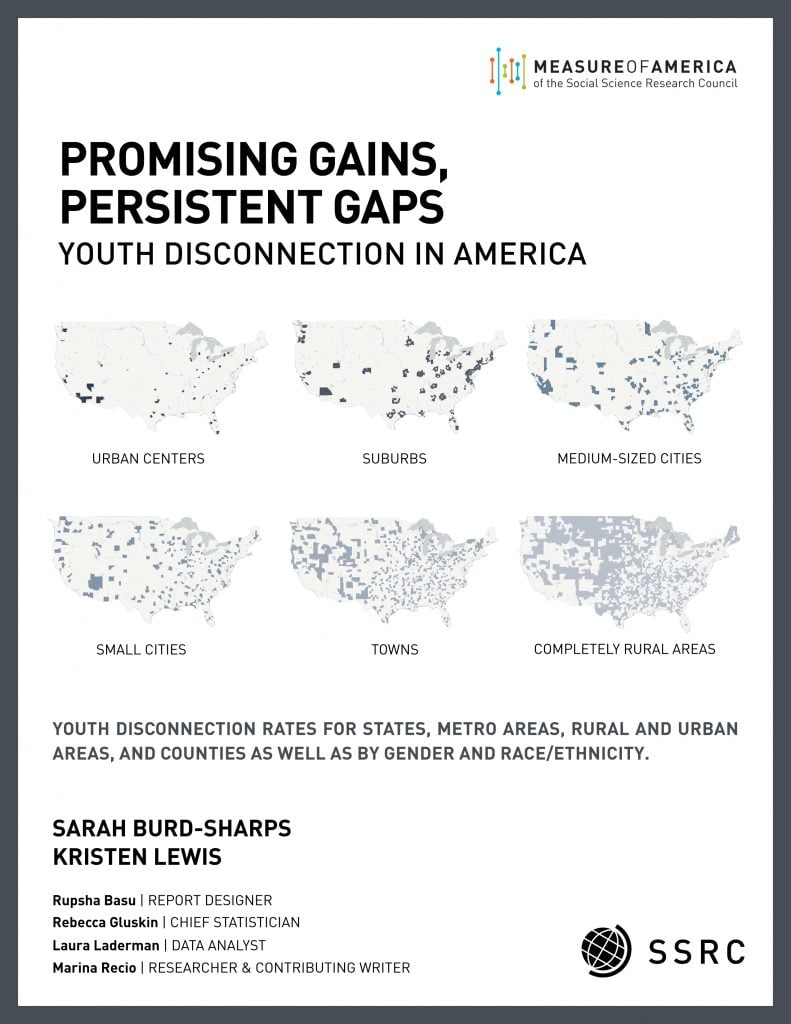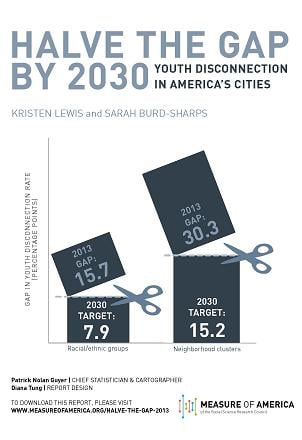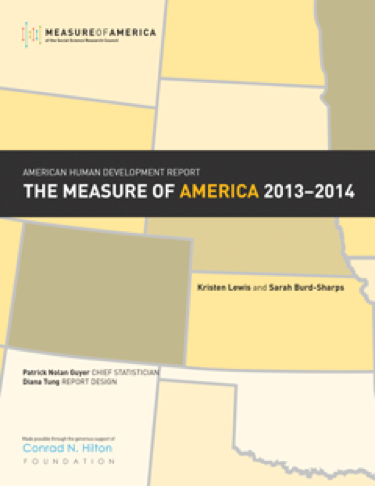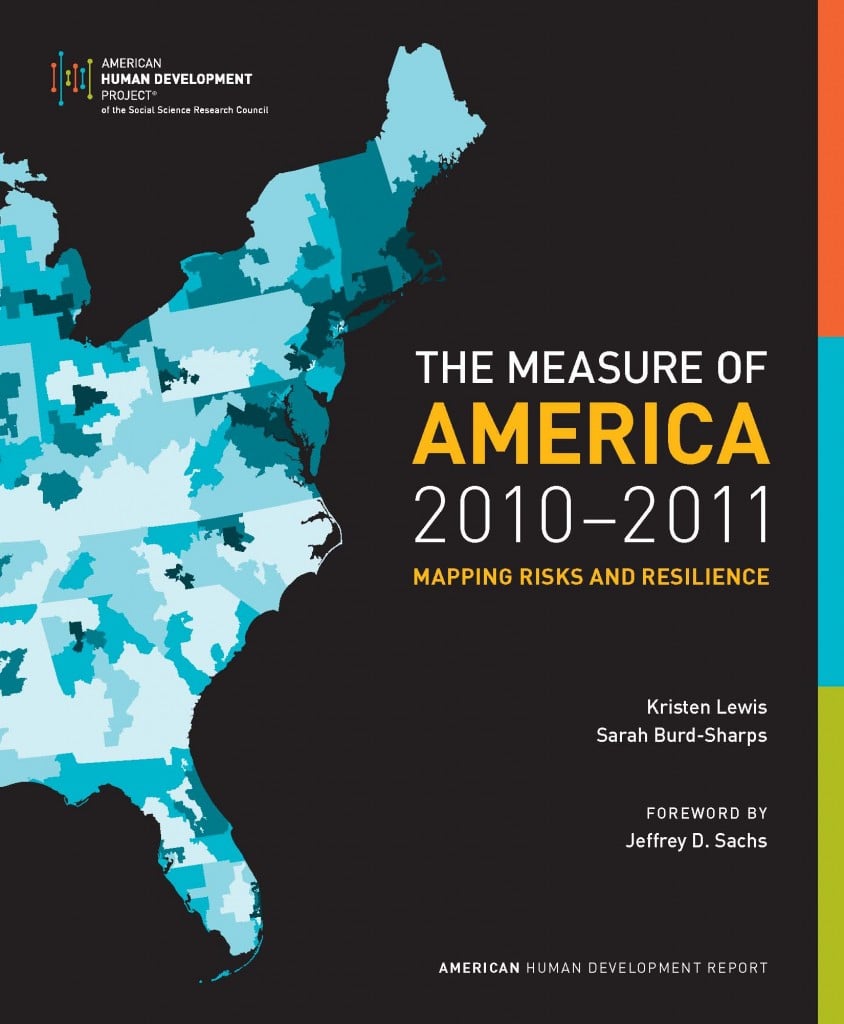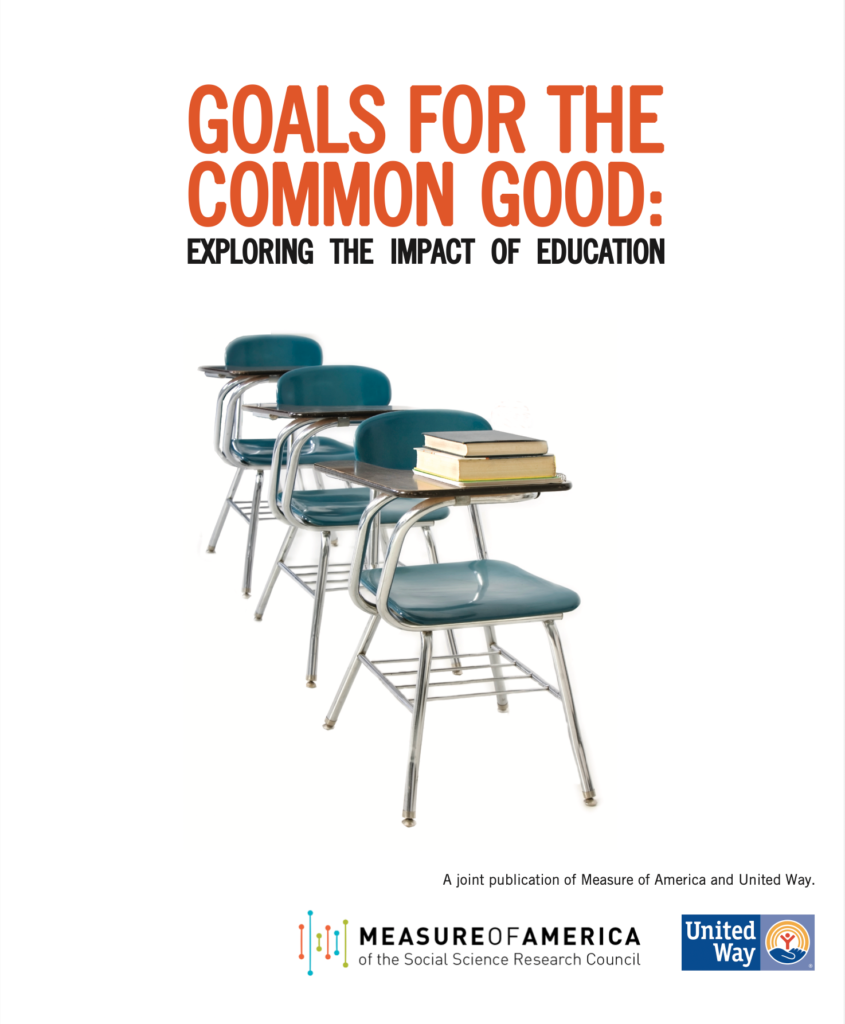Our Work
Broad Recovery, Persistent Inequity: Youth Disconnection in America
Report | October 31, 2024Broad Recovery, Persistent Inequity presents 2022 youth disconnection rates for the United States as a whole as well as by gender, race and ethnicity, region, state, metro area, and congressional district.
Ensuring an Equitable Recovery: Addressing Covid-19’s Impact on Education
Report | October 3, 2023Ensuring an Equitable Recovery presents 2021 youth disconnection rates for the United States as a whole as well as by gender, race and ethnicity, region, state, metro area, and congressional district.
A Disrupted Year: How the Arrival of Covid-19 Affected Youth Disconnection
Report | March 31, 2022On the eve of the Covid-19 pandemic, the number of teens and young adults disconnected from both work and school in the United States was lower than it had been in over a decade. Between 2010 and 2019, the youth disconnection rate fell 27 percent, driven largely by the steady increase in youth employment in the years following the Great Recession.
A Decade Undone: 2021 Update
Report | July 29, 2021A Decade Undone: 2021 Update, a follow-up to last year's A Decade Undone: Youth Disconnection in the Age of Coronavirus, presents 2019 youth disconnection rates for the United States as a whole as well as by gender, race and ethnicity, region, state, metro area, county, congressional district, and public use microdata area (PUMA).
A Decade Undone: Youth Disconnection in the Age of Coronavirus
Report | June 10, 2020This report, written in the months before the pandemic, presents youth disconnection rates for the United States as a whole as well as by gender, race and ethnicity, region, state, metro area, county, and congressional district.
Making the Connection
Report | April 25, 2019This report presents the latest available data on youth disconnection for the United States as a whole as well as by gender, race and ethnicity, region, state, and metro area. It also examines a key factor preventing young people from staying in school and the workforce: disparities in access to reliable and affordable transportation.
Two Futures: The Economic Case for Keeping Youth on Track
Report | October 9, 2018Building on Measure of America’s Disconnected Youth Series, Two Futures: The Economic Case for Keeping Youth on Track finds that by the time they reach their thirties, those who had been working or in school as teens and young adults earn $31,000 more per year.
More Than a Million Reasons for Hope
Report | March 19, 2018This report analyzes youth disconnection in the United States by state, metro area, county, and community type, and by gender, race, and ethnicity. It is the first in Measure of America’s disconnected youth series to compare American and European metro areas or to examine disconnection by group characteristics.
Promising Gains, Persistent Gaps
Report | March 8, 2017Since Measure of America first wrote about youth disconnection half a decade ago, public awareness of both the plight and the promise of young people who are not in either school or the workforce has grown by leaps and bounds. This report takes a look at the disconnected youth population, what particular challenges they face, and what strategies have been shown to work.
Retail and Opportunity
Report | September 10, 2016Past research on workers in the retail sector showed that individuals face many obstacles on the path to economic success. This research investigated how retail employment relates to broader community conditions and individual-level characteristics with the aim to answer three questions.
Geographies of Opportunity
Report | April 22, 2015Geographies of Opportunity: Ranking Well-Being by Congressional District is an in-depth look at how residents of America's 436 congressional districts are faring in three fundamental areas of life: health, access to knowledge, and living standards.
Connecting Youth and Strengthening Communities
Report | September 29, 2014This report explores the relationship between civic engagement and opportunity. It provides data and analysis that builds on previous studies that found associations between civic engagement and economic opportunity.
Historical Report of Opportunity
Report | June 24, 2014“Historical Report of Opportunity,” the first statistical measure of national and state opportunity levels over the past four decades, uses publicly available data to provide a holistic picture of how the climate for opportunity has changed in all 50 states and Washington, D.C.
HALVE THE GAP BY 2030: Youth Disconnection in America’s Cities
Report | October 24, 2013In this report we imagine, in very specific terms, a different, better tomorrow. We lay out an ambitious but attainable goal: to halve the gaps between the most- and least-connected neighborhoods and between racial groups in half by 2030.
The Measure of America 2013–2014
Report | June 19, 2013This third volume in the Measure of America series measures well-being in three vital areas—health, education, and earnings—that shape the opportunities available to us and enable people to invest in their families and live to their full potential.
One in Seven
Report | September 13, 2012An astonishing one in every seven Americans ages 16 to 24 is neither working nor in school—5.8 million young people in all. This brief ranks the country’s 25 largest metropolitan areas as well as the nation’s largest racial and ethnic groups in terms of youth disconnection.
The Measure of America 2010-2011: Mapping Risks and Resilience
Report | November 10, 2010The book contains American Human Development Index ranking for all 50 states, 435 congressional districts, major metropolitan areas, racial and ethnic groups, as well as men and women.
Goals for the Common Good
Report | May 13, 2009This report is a companion piece to the online Common Good Forecaster,™ a joint product of United Way and Measure of America. It takes a closer look at the ten indicators featured on the Forecaster and makes the case for why education matters to each of these critical areas.

